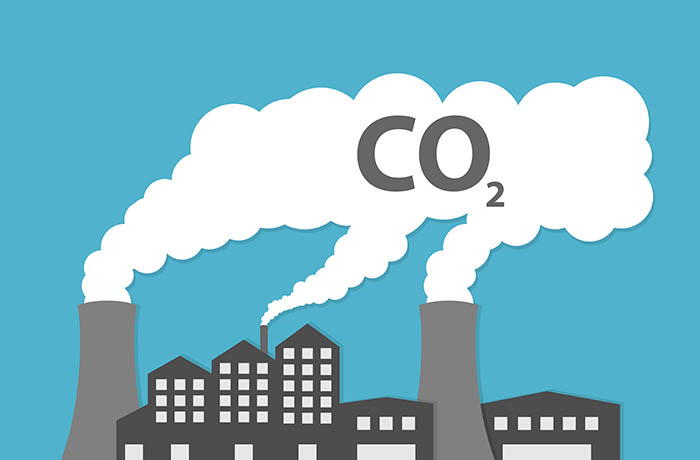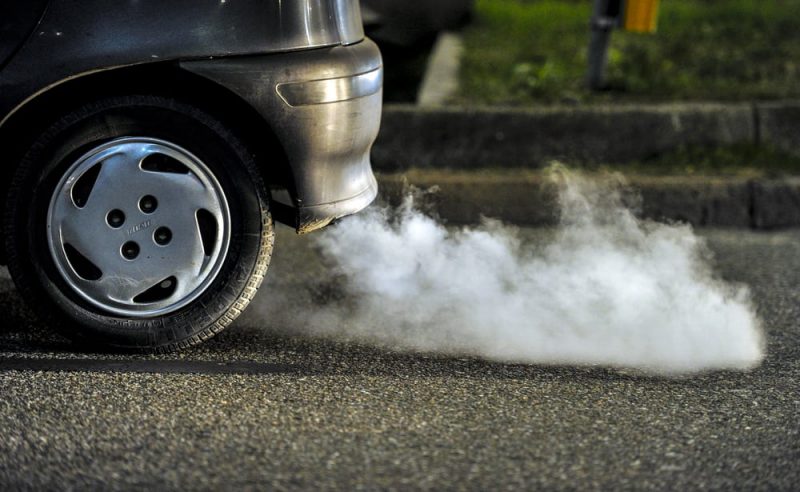The atmosphere overheating is the increase in the average temperature of planet Earth. This occurs when certain gases (called greenhouse gases) that retain heat from the sun’s rays are released into the atmosphere in excess. For instance: carbon dioxide, methane, and nitrogen oxides.
Almost all the Greenhouse gases are naturally present in the atmosphere and are necessary because they retain part of the solar radiation (infrared or long-wave radiation), which allows maintaining an average temperature suitable for life (without these gases, the planet’s temperature would be much lower ). This phenomenon occurs naturally and is known as the greenhouse effect.
However, since the Industrial Revolution and due to human activity (industries, transportation, deforestation, burning of fossil fuels), emissions of gases and chemical compounds into the atmosphere have increased considerably. These gases retain heat and contribute to global warming that results in global climate changes.
Consequences of the overheating of the atmosphere
The overheating of the atmosphere, which is produced by the increase in the emission of greenhouse gases, brings consequences that affect the order of the planet and the living beings that inhabit it. The main consequences are:
- Melting of the glaciers.
- Increased levels of water bodies.
- Forest fire risk.
- Risk of flooding caused by rising seas.
- Increased desertification due to low rainfall.
- Greater spread of diseases from warm areas.
- Alterations in biodiversity.

Examples of gases that cause the atmosphere to overheat
Natural gases
- Carbon dioxide (CO2). It is a gas that is naturally in the atmosphere, but has increased its presence in recent decades. This is mainly due to the burning of fossil fuels and deforestation (as trees absorb CO2 for photosynthesis). Year after year, new records are set for the presence of this gas in the atmosphere.
- Methane (CH4). It is a gas that forms naturally as a result of the decomposition of organic matter, but it is also produced by human activities such as gas and food production and in waste treatment. It is present in the atmosphere in a lower proportion than CO2 and, although its duration in the atmosphere is short, it has a very powerful heating power.
- Ozone (O3). It is a gas that is in the stratosphere (ozone layer) and absorbs part of the ultraviolet solar radiation (which is harmful to the biosphere), which allows life on earth. The ozone that is closest to the earth (tropospheric ozone) is not emitted directly into the atmosphere, but is formed through photochemical reactions and in high concentrations it has harmful consequences for the health of living beings.
- Nitrogen oxides. It is made up of different gases (which combine oxygen with nitrogen), which are harmful to the health of living beings and which are emitted naturally (by forest fires, bacterial decomposition) and by human activities (combustion of diesel engines, combustion coal, oil or natural gas).
- Water steam. It is a vital element in the atmosphere that is generated naturally as a result of evaporation. It is often considered as an amplifier of other greenhouse gases, since an increase in carbon dioxide produces an increase in the temperature of the earth, which, in turn, produces an increase in water vapor in the atmosphere.

Artificial gases
- Chlorofluorocarbons (CFCs). They are chemical compounds that contain chlorine, fluorine and carbon and that do not exist in the atmosphere naturally but have been created chemically by man. When these gases reach the stratosphere, chlorine is released, which is responsible for the destruction of the ozone layer. CFCs were used in aerosol manufacturing and in refrigeration and air conditioning until they were banned in 2010.
- Hydrofluorocarbons (HFCs). They are chemical compounds that contain hydrogen and fluorine and that were used to replace CFC (since it significantly affected the ozone layer). However, HFCs have great heating power and affect the greenhouse effect.
- Sulfur hexafluoride (SF6). It is an artificial gas used mainly as an electrical insulator for equipment in industrial processes. Due to its high density, it cannot ascend to the upper layers of the atmosphere but contributes to the greenhouse effect due to its high permanence in the air. At high temperatures it decomposes into toxic substances such as sulfur dioxide (which, released into the atmosphere, is responsible for acid rain).
- Perfluorocarbons (PFCs). They are chemical compounds created by the human being in which hydrogen atoms are replaced by fluorine atoms. They are used for refrigeration and in the medical field, mainly in ophthalmology. When released into the atmosphere, they remain active for a long period of time and contribute to overheating.
How to reduce the emission of polluting gases in the atmosphere?
To reduce the emission of polluting gases and thus conserve the planet, certain processes that generate greenhouse gases must be abandoned or limited. The changes must take place at the governmental and social level and through the commitment of all citizens.
Some alternatives are:
- Reduce the use of transportation that releases carbon dioxide into the atmosphere.
- Avoid deforestation.
- Use renewable energy.
- Reduce energy consumption.
- Eat food with a low carbon footprint.
- Consume local products.
